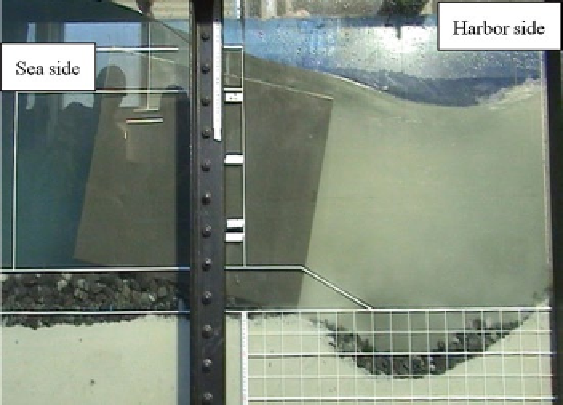Environmental Engineering Reference
In-Depth Information
risk analysis should be useful to consider the best countermeasure. At least the
protective effect would not be zero even if tsunami overflows occurred when the
breakwaterscouldwithstandtheoverlows.Suchaneffectshouldbeconsideredas
the effect of resiliency of the protective facility.
14.4.3
Considerations on the Resiliency Structure Against
Tsunami Overlow
In the 2011 Tohoku Earthquake Tsunami, some breakwaters collapsed under the
actionofthetsunamicrest.Itissuspectedthatmanycollapsedasoverlowbytsu-
nami. Arikawa et al. (
2012
,
2013
) clarified the mechanism of falling of breakwaters
by physical experiments. This report indicated that the main factor causing falling
was the lateral force resulting from the difference of the water level on the front and
rear sides of caissons. As the size of the tsunami grew, more and more violent over-
lowfellandreachedabovethefoundation,resultinginscouringofthefoundation.
Figure
14.12
shows the hydraulic model test in progress. It took only several min-
utes of on-site conversion from the start of overflow until near-maximum scour
depth, at which time the foundation's rubble stones gradually fell into the scour
hole. When scouring reached the foundation's rubble stones around the lower parts
of the caissons, the caissons started to incline and slid straight down.
Therefore, to protect the basement against scouring behind the breakwater due to
overlowisoneofthecountermeasuresagainstthelargertsunami.Thesampleof
theresiliencystructureagainsttsunamioverlowisshowninFig.
14.13
. This type
of countermeasure not only strengths the resistance force against lateral force due to
Fig. 14.12
Caissonstabilitytestagainstoverlowscour

Search WWH ::

Custom Search